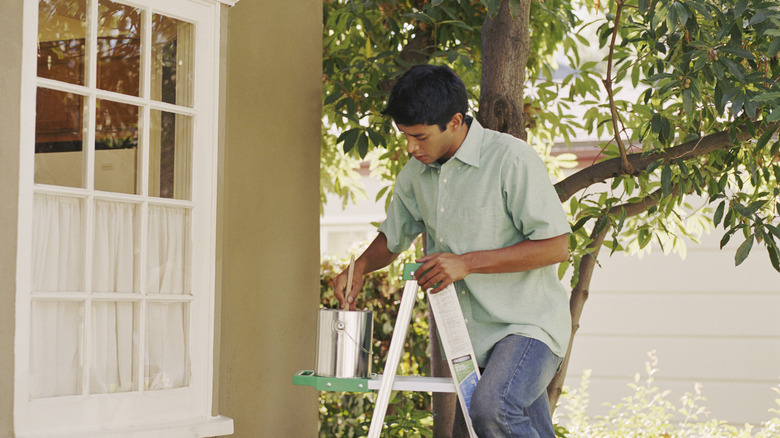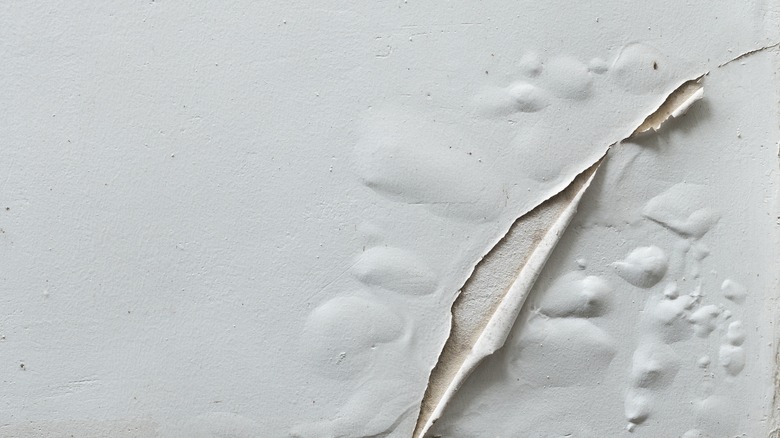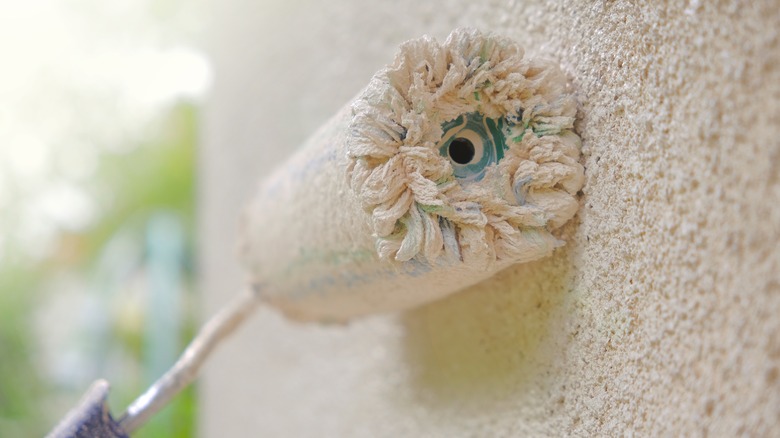Here's What Happens To Your Home's Exterior If You Paint On A Hot Day
There is always that one fond memory of your childhood home being painted: It's a beautiful hot summer day, there is not a cloud in the sky, and your ice-cold lemonade drips with sweet condensation. You look up to your dad on the ladder as he tries to get that second coat of paint on while mom comes out, imploring you two to be careful. Although precious and perhaps idealized, this memory of painting on a hot day is risky, as high temperatures (around 90 degrees Fahrenheit) can cause some problems if you do not use some tricks of the trade.
Maybe your mom or dad did their research, and all went well in this daydream memory, or perhaps they got a sunburn for being out too long scratching their heads, wondering why this paint job isn't working out so well. Aside from your nasty burn, the most common issues when attempting to paint your home's exteriors in hot temperatures are things like heat bubbles, the longevity of the paint, and the quality of your first and second coats. Luckily, there are ways to avoid these problems and ensure that everything goes as planned.
How to avoid painting complications from the sun and heat
The last thing you want to see after a long day of painting your home's exterior is heat bubbles and blisters beginning to form. This happens when air stuck between the paint coating and your exterior wall gets hot, as a result, the damp air looks for an escape and forms blisters or bubbles. To avoid this, prepare your surface before painting over it, especially those that happen to be in direct sunlight. You can also try to use lighter colors instead of darker ones minimizing the amount of heat absorption.
The other common issue of the sun and heat is its effect on the actual lifespan of the paint you are working to apply — this is no easy job, and doing it more than once can be frustrating. So, the best way to dodge another go at it is to work within the shade — clear of direct sunlight. After all, direct sunlight is much warmer than the temperature of shade, and shade has less radiation in comparison, reducing the rate of drying and allowing the paint to bind properly.
Keep in mind paint has different properties impacting its ability to dry. For example, if it's hot enough to fry an egg on your head, say 90 Fahrenheit, refrain from using oil-based paints. The same goes for latex and acrylic paints, although they can be a little more sensitive, becoming difficult to use around 85 Fahrenheit. To put it simply, be mindful of the forecast and even more mindful of the paint you're using.
Warning: Beware of heat... and humidity too!
Evidently, the heat poses a significant threat to your paint job, and if the first coat is done incorrectly, it's only a matter of time before it haunts the second into a gruesome short-lived blistering fate. So heed this warning: beware of heat... and humidity too, like a stealthy accomplice, humidity can sneak into your coating, delay the drying process, and even produce spots on the paint surface. The optimal humidity for painting is within the range of 40% to 50%, while anything above 85% should be avoided.
All things considered, fond memories can still be made when painting the exterior of your home — just be sure to pay attention to the temperature, the humidex, and your paint color along with its properties. Hot weather is always a treat, so stay clear of that sun when painting, have fun with it, and of course, enjoy the lemonade!


